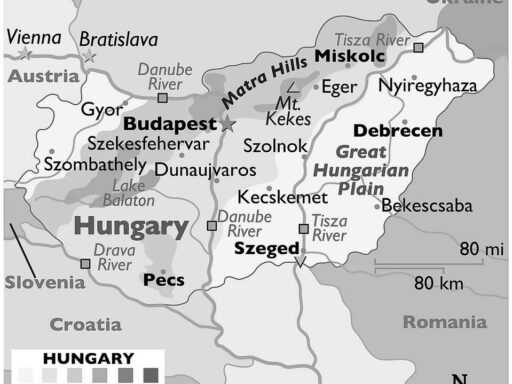War elephants largely stopped being used in battle around the early 19th century, roughly by 1800, due to the rise of gunpowder weapons and the practical challenges of maintaining elephants in warfare.
Gunpowder and firearms dramatically reduced the effectiveness of war elephants on the battlefield. The loud noise and unfamiliar sounds from muskets and cannons caused elephants to panic. Armies equipped with cannons could attack elephants safely without risking their own troops being trampled. This rendered elephants vulnerable and unreliable in combat.
Elephants were historically difficult to capture and train for war. Their long gestation period of about 22 months and decades required to reach maturity limited domestication. They had to be raised from a young age with mahouts (trainers) to be battle-ready. Male elephants also enter musth, a state of extreme aggression, making them hard to control during warfare.
The availability of war elephants declined sharply due to environmental and human factors. Deforestation and hunting reduced elephant populations, especially Asian elephants, which dropped to mere thousands by the early 20th century. Although African elephants were more numerous, they were tougher to train and unsuitable for war compared to their Asian counterparts.
By 1800, war elephants were more symbolic than tactical war assets. Leaders used them to display power rather than for frontline battle roles. Most elephants became beasts of burden in military logistics or were employed in civilian tasks like logging. Their rarity, training difficulties, and vulnerability to gunpowder weapons meant they could no longer serve as effective instruments of war.
| Factor | Impact |
|---|---|
| Gunpowder and firearms | Scared elephants, made them vulnerable; cannons killed elephants safely |
| Elephant biology and training | Long maturation, musth aggression, hard to tame for war |
| Environmental decline | Deforestation and hunting reduced populations |
| Symbolic use | From battle tools to displays of power and labor |
- War elephants declined mainly due to gunpowder weapons around 1800.
- Elephant biology and the difficulty of training limited their battlefield use.
- Environmental factors further reduced available elephants for war.
- They shifted from war assets to symbolic and labor roles over time.
When Did War Elephants Stop Being Used in Battle, and Why?

War elephants stopped being used regularly around the early 1800s, largely due to the rise of gunpowder weapons and the challenges of maintaining and controlling these massive creatures in increasingly modern warfare. But that’s just the headline. The story behind their fall from battlefield fame is as fascinating as it is complex.
Imagine towering beasts stepping noisily onto ancient battlefields, tusks glinting, sending enemy ranks into a chaotic collapse. War elephants held a legendary status, part myth, part terror. To many soldiers, especially before they’d faced one, these creatures might as well have been monsters. Their size alone could flatten rows of spears and pikes like a bulldozer on a garden fence.
However, elephants were not fearless. Contrary to their imposing bulk, they had sensitive skin and were easily frightened by loud noises and sharp projectiles. They could panic and run amok—sometimes trampling their own side. Their mahouts, or handlers, often had to use hooks, spears, or even kill a rampaging elephant to prevent disaster. Interestingly, ancient writers like Pliny the Elder claimed that elephants were terrified of pigs, allegedly lit on fire and sent charging into their ranks—perhaps sounding more like a clever psychological weapon than a practical tactic.
Only mature male elephants were used in combat roles, because females and young males would flee if confronted by opposing bulls. This limited how many elephants any army could field. Despite these quirks, elephants also served as mobile archery platforms and raised generals above the chaos to survey the battlefield—a kind of prehistoric UAV.
So why don’t we see elephants smashing through lines today? The answer lies in technological, logistical, and environmental shifts that combined to make elephants obsolete in warfare.
The Gunpowder Problem
The loud, thunderous noise of muskets and, later, cannons shattered elephants’ nerves. Imagine being a giant beast used to trumpeting commands but suddenly bombarded by terrifying bangs. Gunpowder weaponry effectively neutralized elephants’ psychological advantage. Armies could take down elephants safely from a distance, without risking cavalry charges.
By the 18th and 19th centuries, cannons and rifles reigned on the battlefield. An elephant under fire became a dangerous liability rather than an asset. Their size made them obvious targets, increasing casualties among these prized beasts.
Supply and Maintenance Woes

Elephants are no easy pets. They breed slowly, with a 22-month gestation and decades needed to reach full maturity. Only wild elephants could be captured and then trained extensively from a young age with their mahouts. This made the supply of trained war elephants always limited.
Furthermore, bull elephants enter periods known as “musth,” marked by intense aggression and unpredictable behavior, complicating their handling further. Outside native habitats, elephants proved costly and difficult to maintain. The Asian elephant population declined significantly by the early 20th century due to deforestation, hunting, and the pressures of capturing wild animals. African elephants, though more plentiful, were notoriously difficult to train for battle.
The End of an Era and the Rise of Novelty
By around 1800, war elephants weren’t the armies’ go-to shock troops anymore. Instead, they became rarities, more symbols of power than practical military tools. Some armies used them as beasts of burden or for peaceful tasks like logging.
Even before their final retreat from the battlefield, war elephants were never the mass forces often imagined. Their use was relatively occasional and localized, often linked to regions where elephants were available and the culture favored their deployment.
Ask yourself: Why rely on a temperamental giant who might panic and wreck your ranks when you can field disciplined infantry with muskets firing volleys? Modern warfare favored consistency and reliability over spectacle.
Lessons From War Elephants’ Decline
- Technological innovation can swiftly change military tactics. The rise of gunpowder changed everything, showcasing how new tech can render even the most awe-inspiring weapons obsolete.
- Logistics matter more than legend. If you can’t maintain or control a weapon easily and reliably, it becomes a liability—no matter how intimidating it looks.
- Nature and warfare don’t always mix well. Elephants’ natural behaviors and biology posed unique challenges for warfare that no amount of training could fully solve.
In the end, war elephants remind us that brute strength can only get you so far. Modern armies lean on precision, discipline, and technology rather than sheer size and mythic power.
Next time you watch a history documentary or a period movie, consider this: those majestic elephants charging into battle were as fragile and unpredictable as they were mighty. Their dramatic exit from warfare around 1800 signals a turning point—when the thunder of cannon fire silenced the trumpeting beasts forever.


